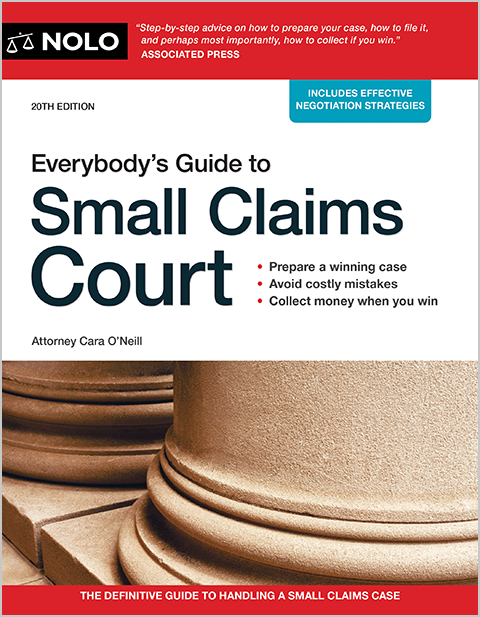In most rear-end car accidents, the trailing driver will usually be at fault for the accident and have to pay damages to the lead driver.
Car accidents occur in a variety of ways. From fender benders to high-speed head-on collisions, the scenarios are almost endless. But rear-end collisions are one of the most common kinds of car accidents, with the National Highway Traffic Safety Administration estimating that around 30% of crashes involving moving vehicles are rear-end crashes.
Generally speaking, the driver who rear-ends the leading car is legally responsible (liable) for damages resulting from the accident. But there are exceptions to the rule, including:
- when the lead driver's negligence caused the accident, and
- when contributory and comparative negligence laws reduce or eliminate the lead driver's ability to recover damages from the trailing driver.
Let's dig a little deeper into the issue of fault for rear-end accidents.
Establishing Fault for Rear-End Accidents
Every driver on the road has a duty to follow other vehicles at a safe distance that varies depending on vehicle speed, road conditions, and a whole host of other factors. Drivers who breach (violate) this duty are considered negligent. That's why, in a rear-end accident, the trailing driver who rear-ends the lead vehicle will almost always be found at least partially negligent (and at fault for the accident).
Car Accidents and the Concept of Negligence
Negligence is the term used to describe behavior that falls below a basic standard of care and ends up hurting others. Basically, you're negligent if you don't act in a reasonable way, and someone is injured as a result. But what constitutes reasonable behavior? It depends on the circumstances surrounding the accident.
To prove that a car accident was caused by driver negligence, you must first show that the driver had a duty of care. This is pretty simple, since all drivers owe a duty to other people on the road, to operate their vehicles with a reasonable level of care and caution.
Second, you must show that the other driver breached this duty, and caused the rear-end car accident, which brings us to our next topic of discussion.
What Are Common Causes of a Rear-End Car Accident?
Drivers in rear-end collisions can breach their duty of reasonable care in a number of ways. For the tailing driver, that can mean:
- failing to pay attention to the road and look out for stopped vehicles
- using a phone or other device while driving (learn more about car accidents caused by phone use)
- failing to stop within a reasonable time
- driving at an unreasonable speed based on the weather and road conditions
- driving under the influence of alcohol or drugs
- improper maintenance of the vehicle (where a rear-end accident is caused by faulty brakes, for example), and
- not following at a safe distance.
After a rear-end collision, watch what you say at the scene and in any discussions afterward. To limit the negative consequences of the accident, be sure to follow certain steps immediately following the accident and when dealing with the other driver's car insurance company.
Is Brake Checking Illegal, and Is the Brake Checker At Fault for a Rear-End Collision?
Brake checking is a form of road rage that happens when a lead driver intentionally slams on the brakes to surprise, irritate, or intimidate a trailing driver. The trailing driver is forced to brake suddenly, or to swerve into another lane to avoid a collision.
Brake checking is dangerous—it can lead to rear-end collisions and even physical altercations between lead and trailing drivers. Brake checking is almost always a traffic violation and could even lead to criminal reckless driving charges in some cases.
If you rear-end someone who brake-checks you, it'll be difficult to prove that their actions were intentional. The brake-checking driver will typically say you were tailgating, or come up with an excuse for why it was necessary to brake suddenly. Try to find witnesses who may have seen the incident, or look for surveillance or doorbell cameras in the area that may have recorded the accident.
If you're accused of brake-checking, don't discuss the details of the accident with anyone, including the trailing driver or the trailing driver's attorney or insurance company representative. Talk to a lawyer, especially if you're concerned about potential criminal consequences.
Learn more about what to do when you're at fault for an accident.
Is the Lead Driver Ever At Fault for a Rear-End Car Accident?
It's possible for the driver of the car that gets rear-ended to be negligent too, including when:
- the lead driver suddenly puts their vehicle into reverse
- the lead car's brake lights don't work properly
- the lead driver suddenly hits the brakes for no valid reason ("brake checks") the trailing driver, as discussed above, or
- the lead car has a mechanical problem, but the lead driver doesn't move it fully to the side of the road.
Get the basics on proving fault for a car accident.
Comparative Negligence vs. Contributory Negligence In Rear-End Collisions
What happens when both the trailing and lead drivers share fault for a rear-end accident, or when multiple drivers are involved in a chain reaction car accident, and blame falls on more than one person? The rules vary based on a given state's negligence laws. A few states still follow a fairly harsh "contributory negligence" system, but most have adopted "comparative negligence" rules. Let's take a look at the difference between the two.
Contributory Negligence
Only a handful of states still subscribe to this system. Essentially, under the law of contributory negligence, if Driver A can show that Driver B's negligence contributed to the accident to any degree, Driver B can't recover anything at all in a lawsuit against Driver B. So if Driver B was 1% at fault for the accident, they get nothing from Driver A, even if Driver A was 99% at fault.
Comparative Negligence
Comparative negligence allocates fault between drivers. A driver's liability may be reduced, but not necessarily eliminated, if the other driver is partly at fault for the accident. There are two variations of the comparative negligence system:
- Pure comparative negligence: Liability gets split according to the percentage of each driver's fault. So, if Driver A is 30% to blame for a car accident, and she has $10,000 in damages, she can only collect $7,000 from Driver B (who was 70% to blame for the accident.)
- Modified comparative negligence: Liability gets split according to the percentage of fault, to a certain level. Once a plaintiff meets or exceeds that level, the plaintiff is barred from recovery. That limit is typically 50% or 51%. In other words, if a plaintiff is more than 50% at fault for the accident, the plaintiff is barred from recovering anything at all from the other at-fault drivers.
These shared fault rules will apply in the event that your car accident lawsuit goes all the way to trial, but insurance adjusters also keep these principles in mind when negotiating a settlement after a car accident.
"Safe Following Distance" and Rear-End Collisions
One common question in rear-end car accident cases is whether the tailing driver failed to maintain a "safe following distance" in the moments leading up to the crash. According to the Centers for Disease Control and Prevention (CDC), a vehicle traveling at 55 miles per hour will cover about 60 feet before the average driver can react to a hazard or other situation, and an average-size car traveling at that speed will need about 160 feet to come to a stop. That's a total stopping distance of 220 feet at 55 miles per hour, under normal conditions.
What is the "Three Second Rule"?
To prevent people from tailgating, many states have issued driver's manuals informing people to follow the "three second rule," which instructs drivers to select a stationary object on the road, such as a tree or a signpost, and be able to count off three seconds between when the vehicle ahead of them passes this stationary object, and when their own vehicle reaches it.
A number of factors may delay either your stopping time or your reaction time (or both), including bad weather, speeding, and distracted driving. Of course, it's not easy to prove whether or not a driver violated the "three second rule" or otherwise failed to keep a safe distance before an accident, but here again is where witness accounts and perhaps surveillance/security camera footage might come in handy.
Next Steps After a Rear-End Collision
It might seem like identifying the at-fault driver is obvious after a rear-end crash, but there could be small details that can completely shift the liability picture. Even if fault for the accident is no longer in question, the issue of how much you may owe in damages might be in dispute, especially when you and the other driver share blame for the accident.
A car accident lawyer can answer your questions and help you with all phases of a car insurance claim or lawsuit after a rear-end crash. Learn more about hiring and working with a lawyer.



